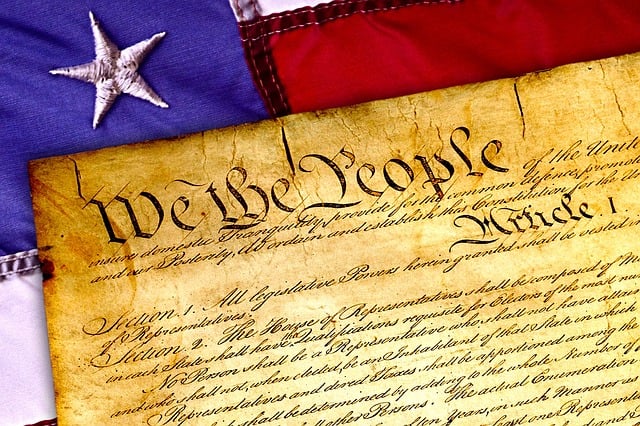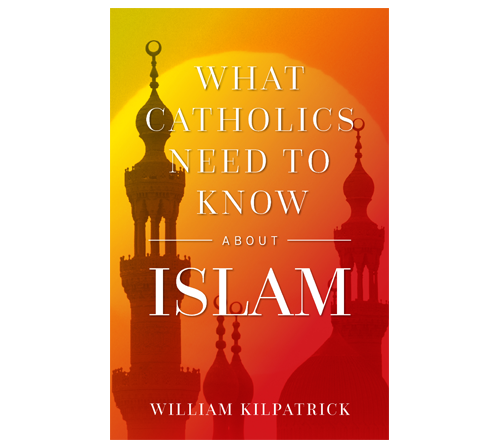Suppose someone offered you a shiny quarter in exchange for the tattered $10 bill in your wallet. Would you bite? Silly question. But that’s the kind of exchange proffered in The Da Vinci Code, and apparently, a lot of people are biting.
Many scholars have criticized The Da Vinci Code because it’s not good history, but the story can also be criticized on the more pragmatic ground that it’s not a good deal. Because that, essentially, is what Dan Brown’s story offers — a deal, a trade.
Here’s the deal: Give up this narrow idea that the Creator of the universe has invited all people to be his sons and daughters, and heirs to glorious and immortal life, and in return you can take comfort in the knowledge that there once was this super-sensitive first-century Jewish fellow who married this very spiritual woman, and some of their descendants can still be found sunbathing at Cannes or sipping coffee in Montmartre.
What’s in it for you? Uh .… well, you can be more whole and sensitive by possessing this secret knowledge and, besides, you won’t have to bother anymore about going to church (unless you’re interested in decoding all those secret messages on the walls), and you can ignore most of those life-denying commandments. Best of all, if you ever get the chance to visit Paris before it becomes Muslimized, you can kneel over the moldering bones of Mary Magdalene.
Now this is plainly a bad trade. But many don’t see it that way. For example, a National Geographic Society survey reveals that 32% of Canadians who have read The Da Vinci Code believe its theories are true — particularly that a sacred bloodline exists. Perhaps these believers are too enthralled by the romance of secret knowledge and hidden mysteries to notice that this bloodline society is a pretty exclusive club.
They also seem to have missed the “who cares?” factor. If Jesus and Mary Magdalene weren’t divine, who cares about their bloodline? If one third of Canadians think the old beliefs are a raw deal, what are they going to think once they work through the humdrum implications of Mr. and Mrs. Jesus and the kids?
As a help to understanding just how bad this deal is, let’s consider an analogy. Instead of the New Testament, let’s give the Da Vinci treatment to America’s founding documents — the ones that tell us we are all created equal and guarantee us freedom of speech, assembly and religion. The Da Vinci version of American history would probably run something like this:
First, you have to realize that all serious scholars know that there were many competing declarations and constitutions in those days. Unfortunately, history is always written by the winners. What we call the Declaration of Independence and the Constitution are fakes — hoaxes that were made up later in order to reinforce the power of the bureaucrats in Washington.
So Americans don’t really have any constitutional rights or guarantees of civil liberties.
But wait! Don’t feel bad just because this equality and representative government stuff is baseless. There’s something much better, something that until now only a few really smart people have known about. Historians have recently uncovered some very sweet love letters Thomas Jefferson wrote to his wife. It turns out that they were much closer than most people think. The relationship with Mrs. J was the really important thing; certainly more important than any ideas Mr. Jefferson may have entertained about “inalienable rights.”
Jefferson was a real human being and not just a purveyor of abstract doctrines.
Then there’s the matter of the recently unearthed will (written in an elaborate cipher), which shows that the Jeffersons bequeathed all their earthly possessions to their children and their children’s children, along with admonitions to keep the bloodline pure. As you can see, this is pretty heady stuff, and far more relevant to our lives than those supposedly “self-evident” truths about “life, liberty,” etc.
And there’s more. It’s a common misconception that the Founding Fathers met in Philadelphia to write a “constitution.” They were actually up to something much bigger. The government has been trying to cover up the truth about the ‘constitutional convention’ for centuries, but all educated political scientists know different. Take a look at the first five letters of “convention.”
Why five? Because five is a number of great significance in crypto-numerology, and is, moreover, highly convenient for our purposes. For example, five is the number of angles in the Pentagon—arguably the most potent building in the world. Notice that the first five letters of convention are C-O-N-V-E.
Now jiggle that around a bit and what do you have? Exactly. C-O-V-E-N.
The convention was actually a cover for a coven — an assembly of witches and wizards. Once you open your eyes to these things you’ll see that it’s all intertwined — as they were that summer in Philadelphia.
Oh, heavens! Don’t be so prudish. The fact is the founding fathers and mothers were practicing a form of ritual sex known as hi-yer-a-game-old-spouse, as well as other mysterious rites. They were all Masons, after all. They were trying to teach us something about wholeness and getting in touch with our deep feelings — not, as is commonly supposed, about the organization of free societies.
But this message was too threatening to the power seekers who succeeded them, so the true spirit of the convention (really “coven-tion”) was suppressed and replaced by all this patriarchal stuff about “separation of powers,” “trial by jury” and other life-denying dogmas.
They weren’t able to cover it all up, however. For example, think of that symbol on the back of the dollar bill — the pyramid with the eye near the top. It’s a Masonic symbol, of course, and symbologists know that the Masons were the descendants of the Knights Templar, and the Knights Templar were the descendants of — well, you know who.
Anyway, have you ever noticed that the eye is wide open? Most people don’t. They fail to see what is right in front of them. But think about it. “Eyes wide open.” Then think about this. In 1999 Stanley Kubrick produced a movie titled Eyes Wide Shut. It’s simple, really. Eyes Wide Shut is a variation of “eyes wide open.” The two exist in a yin-yang relationship. The “shut” finds its completion in the “open” and the “open” in the “shut” in a sort of eternal rhythm. And what is the movie about? Yes, that’s right. It’s about ritual sex.
Apparently our Founding Fathers were trying to leave us a message, and they were trying to leave it in the only way available to them — though arcane Masonic symbols. Luckily the message has been kept alive by a few brave souls like Stanley Kubrick and Tom Cruise, who plays the character of Harford in the film. By the way, the name “Harford” — are you ready for this? — is a contraction of Harrison Ford, and the name “Ford” is an anagram of “frod.” F-R-O-D. Now, if you read it from left to right, and add “O”, the universal symbol of completion, what do you get?
Yes, indeed, Frodo — someone who also belonged to a secret brotherhood charged with a dangerous mission. Coincidence? My dears, there are no coincidences. Let those who have eyes to see, see, so to speak.
So while the uptight powers-that-be want to convince people that they are all sons and daughters of liberty, the really good news is that there are actual blood descendants of Adams and Jefferson and Jay living among us to this very day.
If you’re lucky you might get a glimpse of them on Beacon Hill or in an upscale bistro in Georgetown. And remember, good breeding and good bloodlines always tell.
This article originally appeared in the July 9-15, 2006 edition of the National Catholic Register
Pictured above: U.S. Constitution
Photo credit: Pixabay


